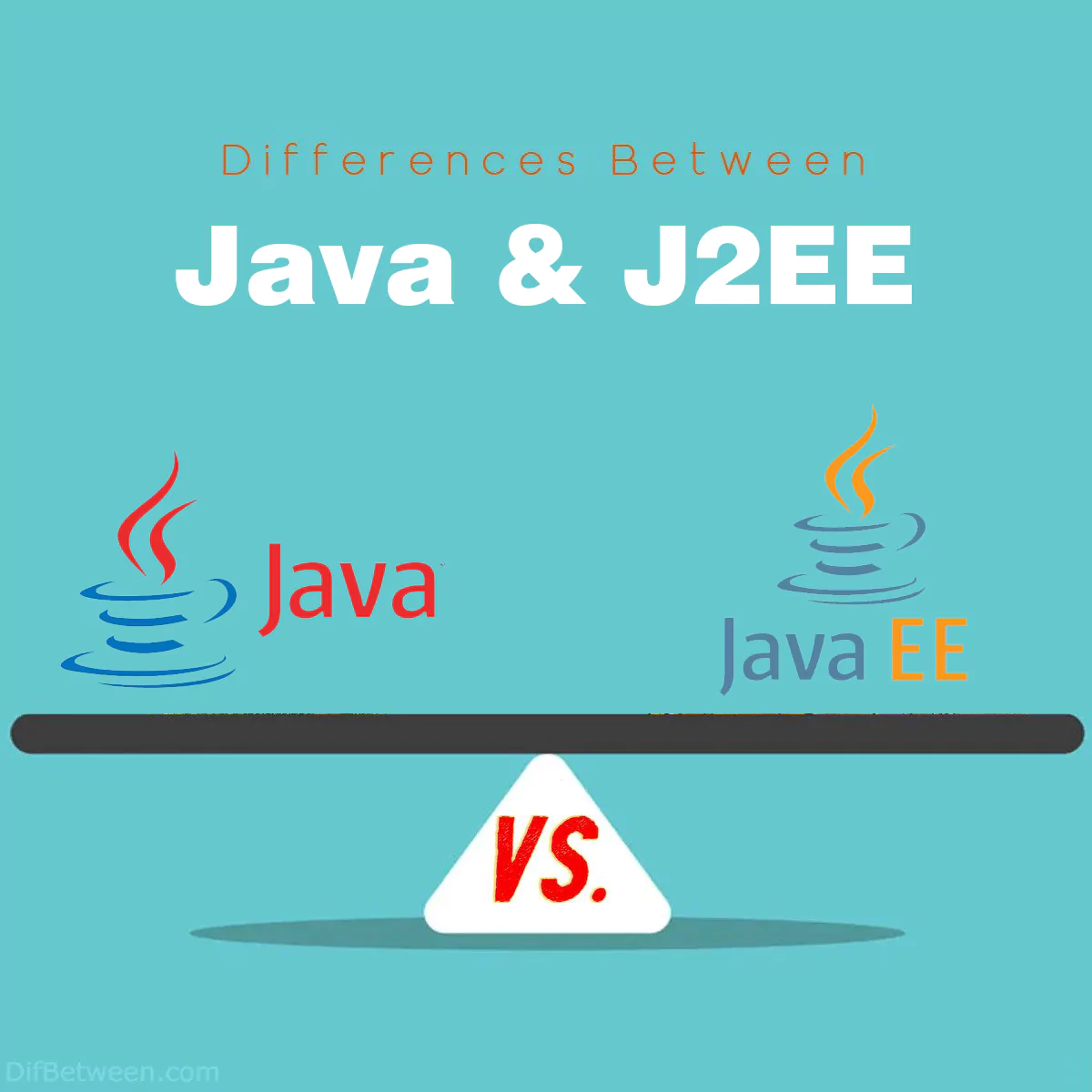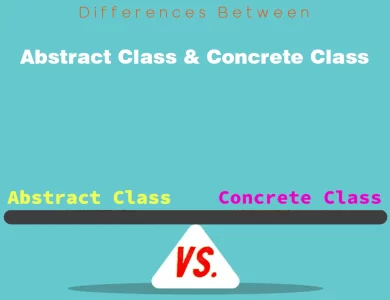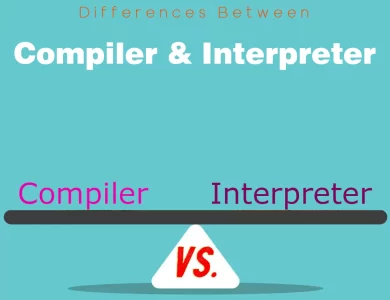
| Aspect | Java | J2EE (Java 2 Platform, Enterprise Edition) |
|---|---|---|
| Core Purpose and Scope | General-purpose programming language | Enterprise-focused extension of Java |
| Application Domain | Versatile; desktop, mobile, web | Enterprise-level; large-scale distributed applications |
| Architecture | Single or two-tier | Multi-tier (Presentation, Business Logic, Data) |
| Components and APIs | Core libraries | Enterprise-specific components and APIs |
| Scalability and Performance | Requires additional effort | Built-in support for scalability and performance |
| Security | Basic security features | Robust security mechanisms for enterprise applications |
| Complexity and Learning Curve | Simple and beginner-friendly | Complex, steep learning curve for beginners |
| Development Tools and Ecosystem | Rich ecosystem and tools | Extends Java ecosystem with enterprise-focused tools |
| Industry Adoption | Widespread across industries | Commonly used in finance, healthcare, e-commerce, etc. |
| Licensing and Costs | Open-source; potential costs for support | Open standards; costs vary by application server |
In the vast realm of software development, two terms frequently come up: Java and J2EE (Java 2 Platform, Enterprise Edition). They are closely related but serve different purposes in the software world. Let’s explore the key differences between these two entities, Java and J2EE, as we embark on this informative journey.
Differences Between Java and J2EE
The main differences between Java and J2EE lie in their scope and application focus. Java is a versatile, general-purpose programming language celebrated for its “write once, run anywhere” capability. It finds utility across various domains, including desktop, mobile, and web development. In contrast, J2EE, or Java 2 Platform, Enterprise Edition, extends Java’s capabilities specifically for enterprise-level software. It emphasizes a multi-tiered architecture, enterprise-specific components, and robust security features, making it the preferred choice for building large-scale, distributed, and secure applications in industries like finance, healthcare, and e-commerce.
1. Core Purpose and Scope
Java: Java, in its essence, is a versatile, object-oriented programming language. It was developed by Sun Microsystems, now owned by Oracle Corporation. Java was designed with the idea of “write once, run anywhere” in mind, making it platform-independent. It can be used to create various types of applications, from desktop software to mobile applications and web applications.
Java’s primary focus is on providing a robust and reliable programming language that can be used for a wide range of applications. It is well-known for its portability, meaning that Java code can run on different platforms without modification, thanks to the Java Virtual Machine (JVM).
J2EE: On the other hand, J2EE (Java 2 Platform, Enterprise Edition) is an extension of Java specifically tailored for developing large-scale, distributed, and enterprise-level applications. J2EE builds upon the core Java platform and adds libraries and specifications for building complex, mission-critical applications.
The key distinction here is that J2EE is a subset of Java, focusing exclusively on enterprise-level software development. It provides a set of APIs (Application Programming Interfaces) and tools that simplify the creation of multi-tiered, scalable, and secure enterprise applications. These applications often involve web services, messaging systems, and database connectivity.
2. Application Domain
Java: Java is a general-purpose programming language with a wide range of applications. Developers use Java to build everything from standalone desktop applications to mobile apps and even embedded systems. Its versatility allows it to be used in various domains, from game development to finance and scientific computing.
In the realm of web development, Java can be employed to create web applications using frameworks like Spring or JavaServer Faces (JSF). However, it’s important to note that Java alone does not provide the same level of support for enterprise-level web applications as J2EE.
J2EE: J2EE, as the name suggests, is primarily intended for the enterprise domain. It is the go-to choice when building complex, distributed systems that require scalability, security, and reliability. This includes applications like online banking systems, customer relationship management (CRM) software, and e-commerce platforms.
J2EE provides a comprehensive set of APIs and services for building web-based enterprise applications. It emphasizes the use of components like Enterprise JavaBeans (EJBs) and servlets to handle business logic and web interactions efficiently. Additionally, J2EE specifications ensure compliance with enterprise standards, making it easier to integrate different components and systems seamlessly.
3. Architecture
Java: Java’s architecture is relatively simple compared to J2EE. It follows a single-tier or two-tier architecture for most applications. In a single-tier architecture, the application code and the data reside on the same machine, whereas in a two-tier architecture, the application is divided into a client-side and a server-side component.
Java applications can have a graphical user interface (GUI) for desktop applications or rely on command-line interfaces for backend systems. The architecture of a Java application largely depends on the specific use case and requirements of the project.
J2EE: J2EE, being tailored for enterprise applications, adopts a multi-tiered architecture. This architecture is commonly referred to as the three-tier architecture, comprising the following layers:
- Presentation Tier: This is the user interface layer where the client interacts with the application. It typically includes web pages, mobile app interfaces, or other user-facing components.
- Business Logic Tier: Also known as the application tier, this layer handles the core business logic and processing. It contains components like Enterprise JavaBeans (EJBs) that manage the business rules and processes.
- Data Tier: This layer deals with data storage and retrieval. It includes databases and data storage systems where the application stores and retrieves information.
J2EE enforces a clear separation of concerns among these tiers, which promotes scalability, maintainability, and security in enterprise applications. This architecture is well-suited for large-scale systems where multiple clients access the same set of business logic and data.
4. Components and APIs
Java: Java provides a standard set of libraries and APIs that are available to all Java applications. These libraries cover a wide range of functionality, including file I/O, network communication, and user interface development. However, Java’s core libraries are not specifically tailored for enterprise-level applications.
Developers can leverage Java libraries to create web applications, but for enterprise-level features like distributed computing, transaction management, and security, additional third-party libraries or frameworks may be required.
J2EE: J2EE, on the other hand, extends Java by adding a set of enterprise-specific components and APIs. These components are essential for building robust, scalable, and secure enterprise applications. Some of the key components and APIs in J2EE include:
- Enterprise JavaBeans (EJB): EJBs are server-side components that encapsulate business logic and can be distributed across multiple servers. They provide features like transaction management, security, and scalability.
- Java Servlets and JavaServer Pages (JSP): These are used for creating dynamic web pages and handling HTTP requests and responses in web applications.
- Java Message Service (JMS): JMS is a messaging API that facilitates communication between different parts of an enterprise application through messages.
- Java Naming and Directory Interface (JNDI): JNDI provides a standard way to access directory services and naming systems, which is crucial for locating and managing enterprise resources.
- Java Transaction API (JTA): JTA is used for managing distributed transactions in enterprise applications.
These components and APIs make J2EE a powerful platform for building enterprise-level systems, ensuring that they meet the necessary standards and requirements of large organizations.
5. Scalability and Performance
Java: Java applications can be designed for scalability, but achieving it often requires more effort and third-party tools or frameworks. Java’s core libraries are not optimized for distributed computing or managing large numbers of concurrent users out of the box.
For high-performance and scalability, developers often need to implement custom solutions or use additional frameworks like Akka or Apache Spark. While this provides flexibility, it also requires more development time and expertise.
J2EE: Scalability and performance are key strengths of J2EE. Its architecture and components are designed with scalability in mind, making it easier to build applications that can handle a large number of users and transactions simultaneously.
J2EE’s support for distributed computing, clustering, and load balancing ensures that enterprise applications can scale horizontally by adding more servers to the system as the load increases. Additionally, features like connection pooling and caching enhance performance.
Overall, J2EE simplifies the process of building high-performance and scalable enterprise applications, which is crucial for businesses that expect significant growth and high user traffic.
6. Security
Java: Java provides a basic level of security through features like the Java Security Manager, which restricts the actions that a Java application can perform. However, Java’s security mechanisms are generally more suitable for standalone applications or applets running in a controlled environment.
When it comes to web applications, Java provides mechanisms for securing data transmission through HTTPS and authentication and authorization through Java Authentication and Authorization Service (JAAS). Nevertheless, enterprises often require more advanced security features.
J2EE: Security is a top priority in J2EE, given its use in mission-critical enterprise applications. J2EE offers robust security mechanisms that cover various aspects of application security, including:
- Authentication: J2EE supports various authentication methods, including username/password, certificate-based authentication, and single sign-on (SSO).
- Authorization: It provides fine-grained access control through role-based authorization, allowing administrators to define who can access specific parts of the application.
- Secure Communication: J2EE mandates the use of secure communication protocols like SSL/TLS for data encryption and protection against eavesdropping.
- Security Auditing and Monitoring: J2EE includes features for auditing and monitoring security-related events, ensuring compliance with security policies.
- Secure Coding Practices: J2EE promotes secure coding practices by providing guidelines and tools for addressing common security vulnerabilities.
In summary, J2EE’s comprehensive security features make it the preferred choice for applications dealing with sensitive data and transactions, such as financial systems and healthcare applications.
7. Complexity and Learning Curve
Java: Java is known for its simplicity and ease of learning, making it an ideal choice for beginners in programming. Its syntax is clear and concise, and it promotes good coding practices through features like strong typing and automatic memory management (garbage collection).
Developers can quickly grasp the fundamentals of Java and start building simple applications. As they progress, they can explore more advanced topics and libraries to expand their skills.
J2EE: J2EE, on the other hand, is considerably more complex than core Java. It introduces a plethora of concepts and technologies related to enterprise application development. The multi-tiered architecture, various components like EJBs and servlets, and the need to adhere to J2EE specifications can make it challenging for beginners.
Moreover, building enterprise applications often involves understanding and configuring complex infrastructure components such as application servers and databases. This complexity can result in a steeper learning curve for developers new to J2EE.
In conclusion, while Java is renowned for its simplicity and ease of learning, J2EE introduces a higher level of complexity due to its enterprise-focused features and requirements.
8. Development Tools and Ecosystem
Java: Java benefits from a rich ecosystem of development tools, libraries, and frameworks. Integrated Development Environments (IDEs) like Eclipse, IntelliJ IDEA, and NetBeans provide robust support for Java development, offering features like code completion, debugging, and project management.
The Java ecosystem includes a wide range of open-source libraries and frameworks for various purposes, such as Spring for application development, Hibernate for database access, and Apache Maven for build automation.
J2EE: J2EE inherits the development tools and ecosystem of Java, but it also introduces specialized tools and frameworks for enterprise application development. Application servers like Apache Tomcat, WildFly, and IBM WebSphere provide the infrastructure for deploying and running J2EE applications.
Frameworks like Spring and Java EE (now Jakarta EE) simplify the development of J2EE applications by providing abstractions and pre-built components. These tools and frameworks are specifically tailored to meet the requirements of enterprise-level software development.
In summary, J2EE leverages the broader Java ecosystem while extending it with tools and frameworks that cater to the needs of enterprise application developers.
9. Industry Adoption
Java: Java enjoys widespread adoption across various industries and domains. Its versatility makes it suitable for a wide range of applications, from mobile app development to scientific research and education. Java has a vast community of developers and a strong presence in the open-source software community.
J2EE: J2EE is primarily adopted by industries and organizations that require the development of large-scale, enterprise-level applications. This includes sectors like finance, healthcare, e-commerce, and government, where security, scalability, and reliability are paramount.
J2EE’s adherence to industry standards and best practices makes it a preferred choice for building mission-critical systems. However, it may not be as widely used in smaller projects or domains that do not require enterprise-level features.
10. Licensing and Costs
Java: Java, as a programming language, is open-source and free to use. Oracle provides the OpenJDK (Java Development Kit), which is the reference implementation of Java. Many other vendors, such as AdoptOpenJDK and Amazon Corretto, offer their distributions of OpenJDK.
While Java itself is free, organizations may incur costs related to support, licensing, and maintenance when using certain Java-based products, such as Oracle’s commercial offerings.
J2EE: J2EE, like Java, is built on open standards and specifications. It does not have a specific licensing fee associated with it. However, implementing J2EE in an enterprise environment may involve costs related to application servers, development tools, and support services.
The costs associated with J2EE largely depend on the choice of application server and any additional tools or services required for development and deployment.
Java or J2EE : Which One is Right To Choose?
Choosing between Java and J2EE (Java 2 Platform, Enterprise Edition) depends on your specific project requirements and goals. Both Java and J2EE have their strengths and are suited for different types of applications. Let’s consider some factors to help you make the right choice:
Choose Java if:
- You Need Versatility: Java is a general-purpose programming language suitable for a wide range of applications, including desktop, mobile, and web development. If your project falls into one of these categories and doesn’t have extensive enterprise-level requirements, Java may be the better choice.
- You’re a Beginner: Java is known for its simplicity and ease of learning. If you’re new to programming or have a small-scale project, Java provides a gentle learning curve and a wealth of learning resources.
- You Want to Keep Costs Low: Java itself is open-source and free to use. While there may be costs associated with specific tools or libraries, Java allows you to minimize expenses.
- You Value Portability: Java’s “write once, run anywhere” philosophy makes it a great choice if you need your application to run on multiple platforms without modification.
Choose J2EE if:
- You’re Building Enterprise-Level Applications: J2EE is specifically designed for large-scale, distributed, and mission-critical enterprise applications. If your project involves handling complex business logic, scalability, and security, J2EE is the natural choice.
- You Require Multi-Tier Architecture: J2EE’s multi-tier architecture, with separate layers for presentation, business logic, and data, is well-suited for enterprise applications. It enforces a clear separation of concerns.
- Security is Paramount: If your application deals with sensitive data or requires rigorous security measures and compliance with industry standards, J2EE provides robust security features.
- You Need Built-in Scalability and Performance: J2EE offers built-in support for scalability and performance, making it easier to handle a large number of users and transactions.
- You’re in an Industry Where J2EE is Common: J2EE is commonly used in sectors like finance, healthcare, e-commerce, and government, where enterprise-level features are crucial.
- You Can Invest in Learning Curve: J2EE has a steeper learning curve compared to Java, especially for beginners. However, if your project demands J2EE’s capabilities, investing in the learning curve can be rewarding.
In summary, the choice between Java and J2EE depends on your project’s specific needs. If you’re developing a small-scale application or need versatility and simplicity, Java is the way to go. On the other hand, if you’re tackling a large-scale enterprise project with complex requirements, J2EE provides the specialized tools and architecture required for success.
FAQs
Java is a versatile, object-oriented programming language known for its platform independence. It allows developers to write code once and run it on multiple platforms, thanks to the Java Virtual Machine (JVM).
J2EE, short for Java 2 Platform, Enterprise Edition, is an extension of Java designed specifically for building large-scale, distributed enterprise applications. It provides tools and components for creating robust, secure, and scalable software.
Java is a general-purpose programming language, while J2EE is a specialized platform for enterprise-level software. Key differences include their application domain, architecture, components, scalability, and security features.
Choose Java when you need a versatile language for smaller-scale projects, such as desktop or mobile applications. It’s also a good choice for beginners and projects where simplicity is paramount.
Opt for J2EE when you’re building large-scale, enterprise-level applications that require multi-tier architecture, robust security, scalability, and compliance with industry standards. It’s commonly used in industries like finance and healthcare.
Yes, Java itself is open-source. There are various implementations of Java, with OpenJDK being the most well-known open-source version.
Popular Java development tools include Eclipse, IntelliJ IDEA, NetBeans, and Visual Studio Code. These integrated development environments (IDEs) provide features like code editing, debugging, and project management.
Java itself is free to use, but there may be costs associated with specific tools, libraries, and support services. J2EE, being a set of specifications, does not have a licensing fee, but costs can arise from using application servers, development tools, and support.
Yes, you can use Java and J2EE together in a project. In fact, J2EE builds upon Java, so your project may involve Java code alongside J2EE components for specific enterprise features.
There are many online resources, tutorials, and courses available for learning both Java and J2EE. You can explore websites, online courses, and books to start your journey in these technologies.
Read More :






